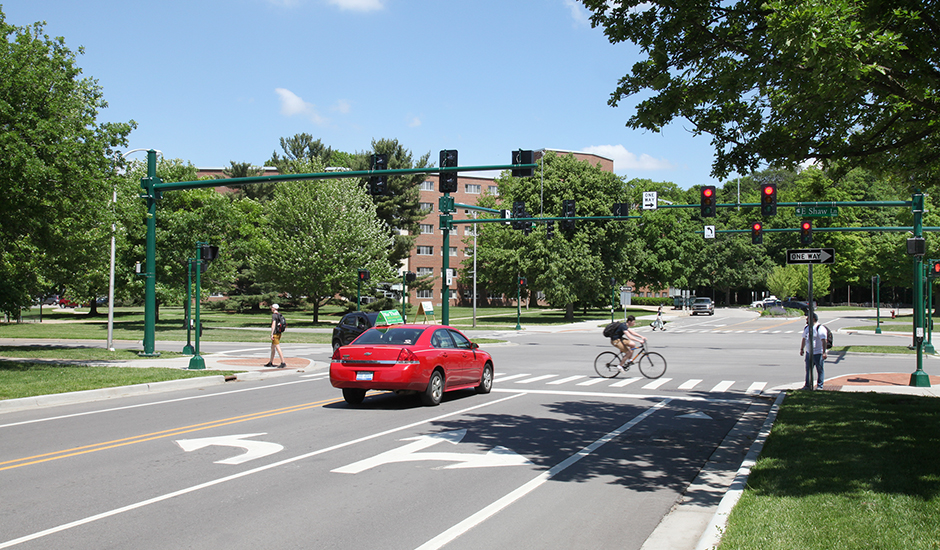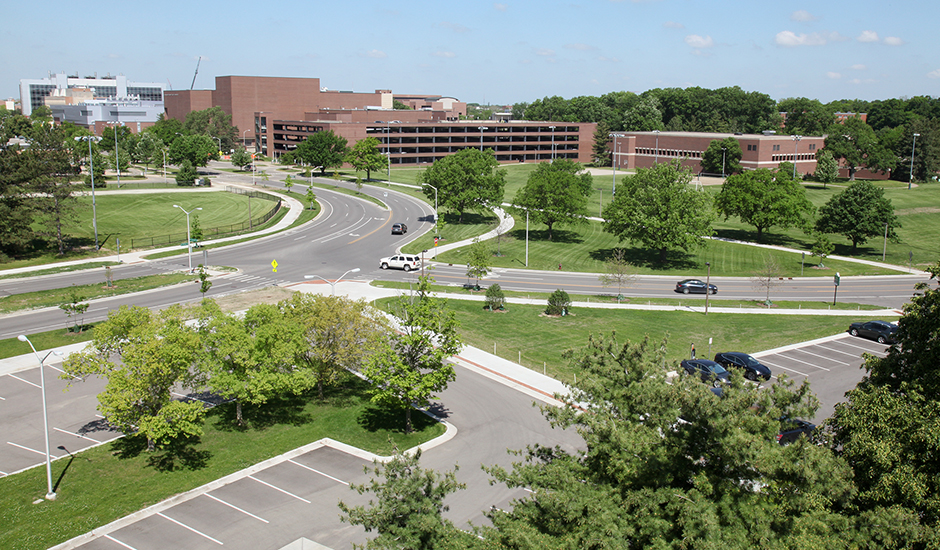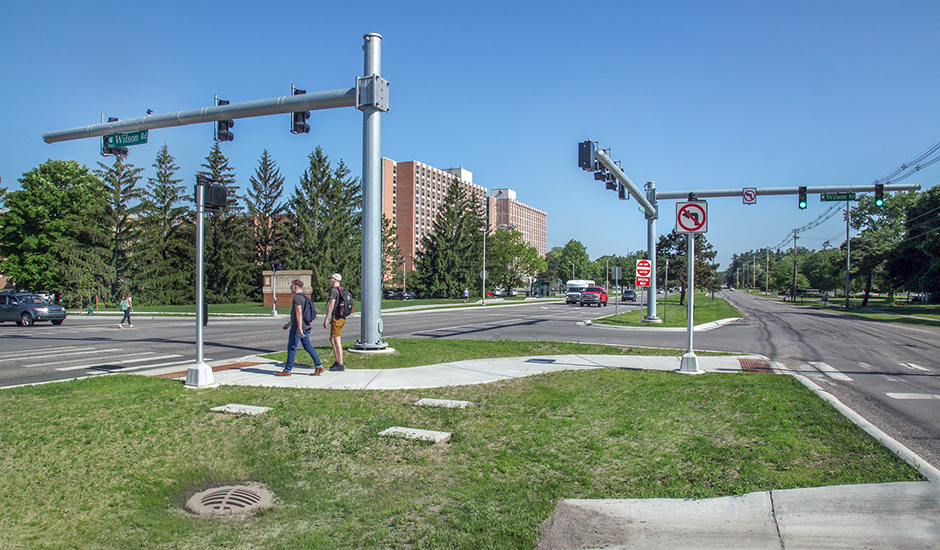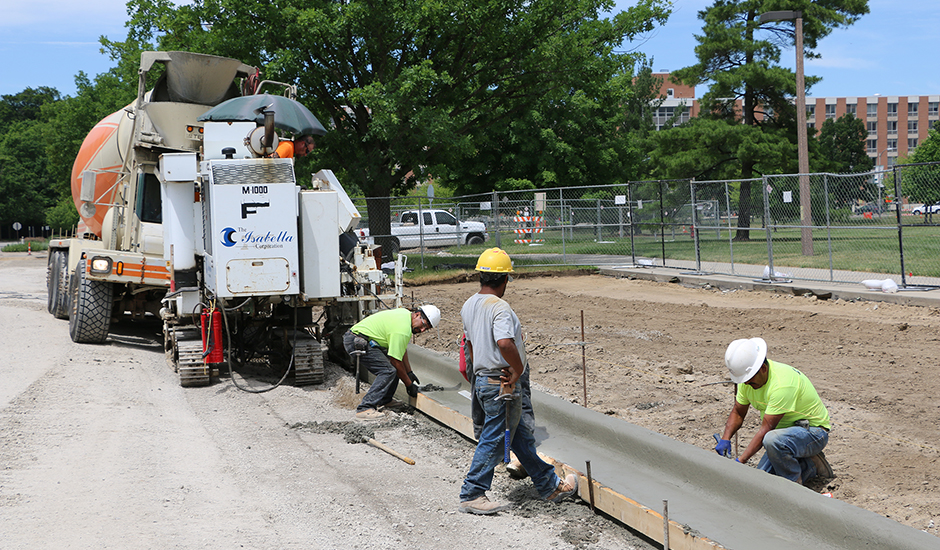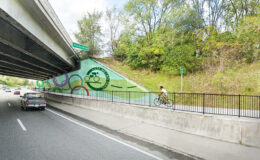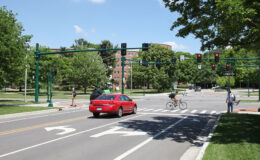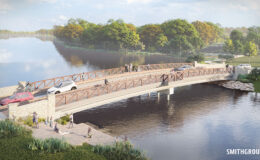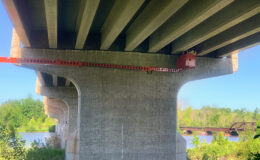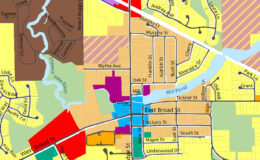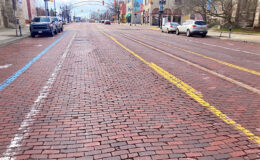A roadway extension project on Michigan State University’s (MSU) campus geared towards improving accessibility and accommodating a major science facility is now complete. The extension of Wilson Road, a four-lane boulevard from Bogue Street to Hagadorn Road, will support MSU’s new Facility for Rare Isotope Beams (FRIB), which is expected to be fully operational in 2022. The FRIB is projected to host more than 3,000 annual visitors and house 400 employees. Wade Trim conducted a traffic study, recommended transportation improvements, and ultimately designed the roadway, utilities, and landscape architecture for the extension project. We also provided construction administration, engineering and inspection services.
Wade Trim led, completed, and administered the $3-million Transportation Economic Development Fund (Category A) grant that funded the project. Focusing on the economic benefits of the University’s $789 million investment and the creation of over 500 jobs was key to the successful grant application.
Close coordination with Ingham County, the City of East Lansing, and the Michigan Department of Transportation (MDOT) was necessary to complete the design of the roadway. A new signalized intersection with a gateway campus sign at Wilson and Hagadorn Roads was designed to serve as a marquee entrance to campus. Conrad Road, a new three-lane road, connects Wilson Road to Shaw Lane and accommodates heavy pedestrian traffic from three student dormitories and an intramural recreational facility. A new signal was designed and installed at Shaw and Conrad to accommodate a safer pedestrian crossing. Bike lanes were placed on both sides of each road and dedicated turn lanes were installed at the intersections of Shaw Lane and Conrad Road, Shaw Lane and Hagadorn Road, and Wilson and Hagadorn Roads. Surface parking was realigned and relocated closer to MSU’s Fee Hall, which houses various medical facilities, to provide better access while maintaining a parking capacity of more than 570 spaces. In addition, the project includes storm sewer and water main improvements, streetlighting, ADA-accessible ramps and sidewalks, bus stops, communications infrastructure, and reconfiguration of athletic fields and green space.

